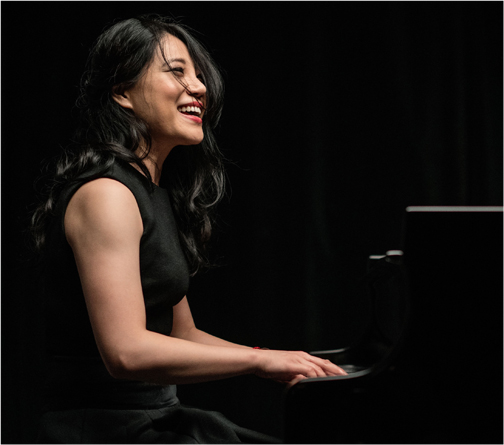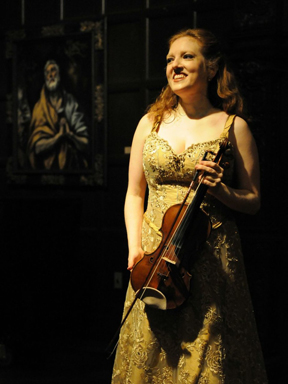By Robert D. Thomas
Music Critic
Southern California News Group
Each week about this time I list five (more or less) classical-music programs in Southern California (more or less) during the next seven days (more or less) that might be worth attending. As usual, Saturday requires tough choices this week but Sunday is also chock-full (and I didn’t even include LA Opera’s “Tosca” performance on that afternoon).
APRIL 27, 28 and 29: PACIFIC SYMPHONY
8 p.m. at Renée and Henry Segerstrom Concert Hall; Costa Mesa
Two French Canadians are on the program. Jean-Marie Zeitouni leads music by Mozart, Chopin, Debussy and Ravel. Louis Lortie will be the soloist in Chopin’s Piano Concerto No. 2
Information: www.pacificsymphony.org
APRIL 28, 29 and 30: LOS ANGELES PHILHARMONIC
11 a.m. April 28, 8 p.m. April 29 and 2 p.m. April 30
at Walt Disney Concert Hall; Los Angeles
Swiss conductor Phillipe Jordan will join with soprano Iréne Theorin and the Phil for an evening of portions of Wagner’s Der Ring des Nibelung. Jordan seems like a natural choice for this program, since he is music director of the Paris Opera where he succeeded James Conlon, and has recorded a CD with his Paris forces of this program.
The L.A. Phil concerts will include the excerpts from all four “Ring” operas that one would expect in this type of program. However, because the program also includes the Prelude and Orchestra Interludes from Das Rheingold, the orchestration includes six anvils, six harps, nine horns, two timpani and one hammer.
The climax, literally and figuratively, will find Theorin singing “Brunhilde’s Immolation” scene, the conclusion of Götterdämerung and the entire cycle. Hearing this music with the L.A. Phil on stage at Disney Hall should be one of the season’s highlights, at least for Wagner lovers.
BONUS: Disney Hall is easily reachable (at least if you’re not mobility challenged) via Metro’s Red and Purple Lines. Exit at the 1st and Hill St. side of the Civic Center/Grand Park station and walk up two steep blocks to reach the hall.
Information: www.laphil.com
APRIL 29: PASADENA SYMPHONY
2 p.m. and 8 p.m. at Ambassador Auditorium; Pasadena
Music Director David Lockington will be on the podium for the final concerts in the PSO’s season. The first part of the program includes music by Holst and Vaughan Williams, with the Los Angeles Children’s Chorus. The second half is Beethoven’s Symphony No. 9, with the Donald Brinegar Singers, JPL Chorus and four soloists joining the orchestra in this monumental work.
Information: www.pasadenasymphony-pops.org
APRIL 29: LONG BEACH SYMPHONY
8 p.m. at Terrace Theatre; Long Beach
Robert Istaad, incoming music director of the Pacific Chorale, leads an evening of Mozart: Overture to The Magic Flute; Symphony No. 25; and Requiem, with the Long Beach Camerata Singers and soloists Elissa Johnston, soprano, I-Chin Lee, alto, Nicholas Preston, tenor, and Randall Gremillion, bass.
BONUS: The Terrace Theatre is easily accessible via the Metro Blue Line. Exit at 1st St. in Long Beach, walk a block south and cross the street to reach the plaza where the theatre is located..
Information: longbeachsymphony.org
APRIL 30: PACIFIC SYMPHONY AT SOKA
3 p.m. at Soka University; Aliso Viejo
Music Director Carl St.Clair leads his ensemble in an all-Beethoven program: Piano Concerto No. 5 (“Emperor”), with Joyce Yang as soloist; and the Triple Concerto, with the Faktura Piano Trio (HyeJin Kim, piano, Fabiola Kim, violin and Ben Solomonow, cello) as soloists.
BONUS: This is a great chance to experience one of the region’s unsung concert halls.
Information: www.pacificsymphony.org
APRIL 30: LOS ANGELES MASTER CHORALE
7 p.m. at Walt Disney Concert Hall; Los Angeles
The Los Angeles Master Chorale performs an eclectic collection of spirituals and other music on April 30 at Walt Disney Concert Hall. Artistic Director Grant Gershon and Assistant Conductor Jenny Wong will conduct 48 LAMC singers in a program entitled “Wade in the Water” (the title comes from the spiritual of the same name by Moses Hogan that will be on the program). The program ranges far and wide, including Maurice Duruflé’s Ubi Caritas and Ralph Vaughan Williams’ Mass in G Minor.
BONUS: Disney Hall is easily reachable (at least if you’re not mobility challenged) via Metro’s Red and Purple Lines. Exit at the 1st and Hill St. side of the Civic Center/Grand Park station and walk up two steep blocks to reach the hall.
Information: www.lamasterchorale.org
APRIL 30: BENJAMIN GROSVENOR AT THE WALLIS
7 p.m. at The Wallis Annenberg Center for the Performing Arts; Beverly Hills
The British pianist plays sonatas by Mozart, Beethoven and Scriabin and other works.
BONUS: Grosvernor also appears with the same program on Wednesday at 8 p.m. at Segerstrom Concert Hall in Costa (philharmonicsociety.org).
Information for April 30: www.thewallis.org
APRIL 30: PENINSULA SYMPHONY
7 p.m. at Redondo Union High School; Redondo Beach
The orchestra continues its 50th anniversary season as Music Director Gary Berkson leads a program of suites by Grieg, Prokofiev, Vaughan Williams and Ravel. Baritone Vladimir Chernov will be the soloist in Prokofiev’s Lieutenant Kïjé suite.
BONUS: Free admission.
Information: www.pensym.org
MAY 3: YO-YO MASS, EDGAR MEYER and CHRIS TILE
8 p.m. at Walt Disney Concert Hall; Los Angeles
Three of the world’s most celebrated soloists play a series Bach Trios, arranged for cello, string bass and mandolin.
BONUS: Disney Hall is easily reachable (at least if you’re not mobility challenged) via Metro’s Red and Purple Lines. Exit at the 1st and Hill St. side of the Civic Center/Grand Park station and walk up two steep blocks to reach the hall.
Information: www.laphil.com
_______________________
(c) Copyright 2017, Robert D. Thomas. All rights reserved. Portions may be quoted with attribution.
 My former wife, who died decades ago from Multiple Sclerosis, was a concert pianist. There are a handful of piano concertos that I consider “Jennifer concertos” (concertos she played), which means when they show up on a schedule I draw a big circle around the particular date.
My former wife, who died decades ago from Multiple Sclerosis, was a concert pianist. There are a handful of piano concertos that I consider “Jennifer concertos” (concertos she played), which means when they show up on a schedule I draw a big circle around the particular date.

